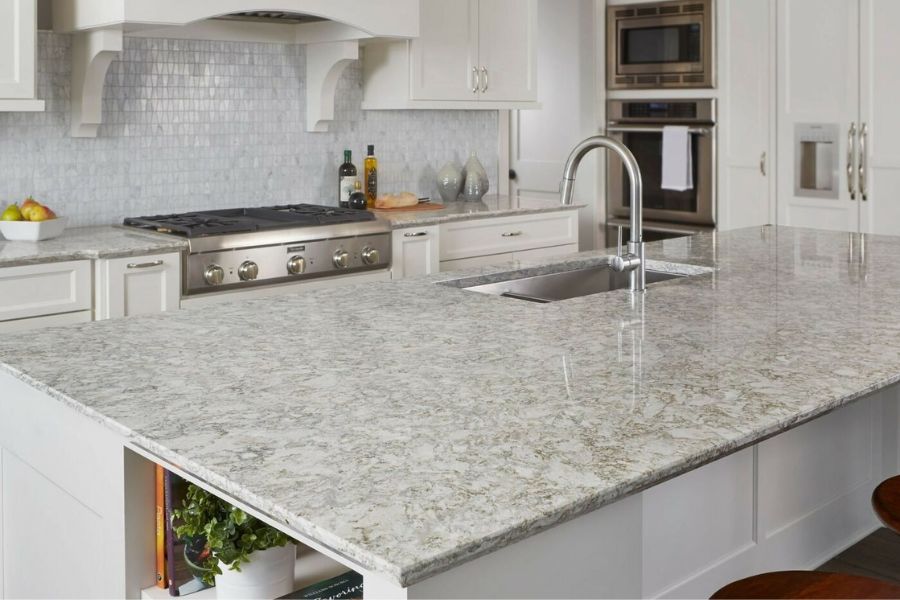Countertops for the kitchen and bathroom can elevate the aesthetic appeal and provide exceptional durability and timeless beauty. If you’re looking to enhance your kitchen space without undergoing a complete renovation, installing granite countertops on existing cabinets is a fantastic option. To successfully install granite countertops, begin by carefully choosing the right stone, considering various colors, patterns, and finishes.
Additionally, ensure the selected granite is of the appropriate thickness for your countertop design. Create a detailed design plan before the installation to align with your aesthetic preferences and ensure that your base cabinets are level to provide a stable foundation.
So, without further waiting, let’s delve into this blog and explore the key steps to achieve a successful installation of granite kitchen countertops on existing cabinets.
Steps by Steo Guide To Install Granite Countertops
Step 1. Choose Granite
The first step in installing granite countertops is selecting the right stone. Granite comes in a variety of colors, patterns, and finishes, so take the time to explore your options. Ensure that the granite you choose is of the appropriate thickness for your countertop design.
Step 2. Measure for Installation
Accurate measurements are critical to a successful countertop installation. Once you have these measurements, you can determine the granite you need. Remember, precision in measurements ensures a seamless fit and a polished final look.
Step 3. Create a Design
Before the installation process begins, create a detailed design plan. This will help you to visualize the final result and ensure that the installation aligns with your aesthetic preferences.
Step 4. Level Base Cabinets
A crucial aspect of granite countertop installation is ensuring that your base cabinets are level. A level base provides a stable foundation for the granite, preventing issues such as uneven weight distribution or stress on the stone.
Step 5. Apply a Sealer
Granite is a porous material, and sealing it helps protect against stains and enhances its longevity. Before placing the granite on the cabinets, apply a high-quality sealer to the underside of the stone. Allow it to dry according to the manufacturer’s instructions.
Step 6. Lift and Place the Granite
With the base cabinets level and the substrate prepared, it’s time to lift and place the granite onto the cabinets. This step may require assistance due to the weight and size of the granite slab.
Step 7. Secure and Finish
Once the granite is in place, secure it to the cabinets using adhesive or brackets. Ensure the seams are tightly joined and the countertop securely attached. Finish the edges according to your design plan.
Can you put countertops for the kitchen on old cabinets?
Yes, you can install granite kitchen countertops on old cabinets, as long as the cabinets are structurally sound and can support the weight of the granite.
How do you attach granite countertops to cabinets?
Installing granite countertops to cabinets usually involves a combination of adhesive and mechanical fasteners. The countertop is commonly glued to the cabinet base, and additional support is often provided by using screws or brackets from beneath the countertop.
What do you put under granite countertops?
A layer of plywood or similar material is often placed on top of the cabinets to provide additional support for the granite countertop. This helps distribute the weight evenly and ensures a stable base for the countertop installation.













